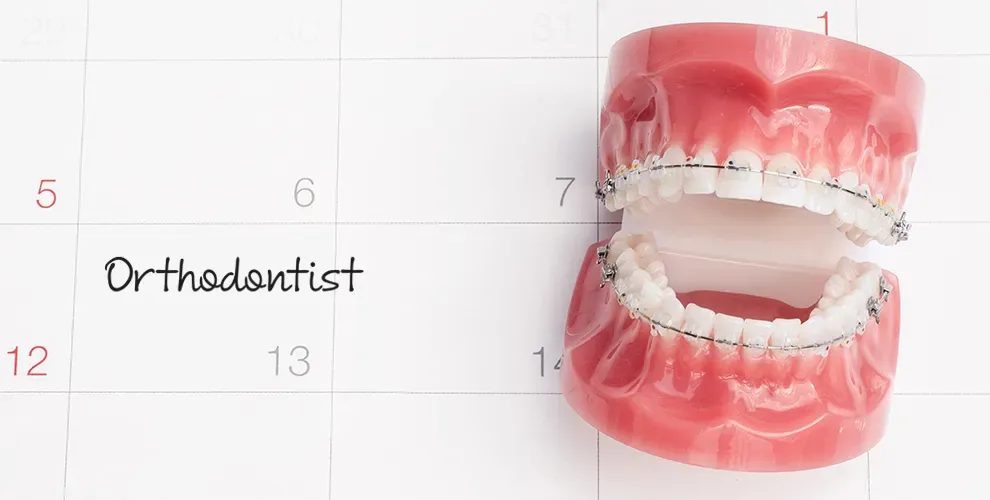What Is Cleidocranial Dysplasia & How Does It Affect Your Teeth?

Table of Contents
- Cleidocranial Dysplasia Explained
- Symptoms
- How It Affects Your Teeth & Body
- Treatment Options
An extremely rare genetic condition that impacts only one out of 1 million births, cleidocranial dysplasia affects the way that the skull, bones, and teeth develop.1 It can cause sloping shoulders, short stature, delayed closing of the spaces between skull bones, missing collarbones, and dental abnormalities.
People with cleidocranial dysplasia can have misshapen teeth and jaws. It can also take longer to lose their baby teeth and for their adult teeth to come in.
Treatment involves managing specific symptoms. For teeth misalignment, it often includes orthodontia and surgery.
Cleidocranial Dysplasia Explained
Cleidocranial dysplasia involves the RUNX2 gene, and it is an inherited condition.2 This condition impacts everyone differently, even multiple people within the same family, but it affects bone development.3
The condition often means that a person will have no collarbones (clavicles) or have underdeveloped ones. The skull and teeth are often involved as well.
It is inherited as an autosomal dominant trait, meaning that only one of the genes is necessary to develop the disorder. If one parent has the abnormal gene, there is a 50 percent chance it will be passed on through pregnancy. The condition impacts males and females equally.
Someone with cleidocranial dysplasia will often be shorter in stature, and their shoulders may slope forward. Facial features are regularly distorted. They include wide-set eyes, a prominent forehead, a flat nose, a small upper jaw, and a wide, short skull. Dental abnormalities are also common with cleidocranial dysplasia.
Symptoms of Cleidocranial Dysplasia
The symptoms can vary widely, but the following issues are possible:
Delayed closure of skull bones (fontanelles), leaving soft spots
Abnormalities in the bones of the hand
Distinctive facial features
A wide pelvic joint
Delayed growth of the pubic bone
Small shoulder blades
Underdevelopment or absence of collarbones
Curvature of upper legs that makes knees seem very close together
Thigh bones angled toward the middle of the body
Decreased bone density
Curvature of the spine
Dental abnormalities
Delayed growth
Hearing loss
Sinus issues
Cleidocranial dysplasia can include symptoms that range from mild to moderate. Not everyone will have all of these symptoms. One’s overall intelligence level is not impacted by cleidocranial dysplasia.
How Cleidocranial Dysplasia Affects Your Teeth & Body
Cleidocranial dysplasia can impact all of the bones in your body, causing them to be underdeveloped, absent, or misshapen. This can change the stature of a person, making them shorter than average. They may seem to hunch in with their shoulders.
The condition can make a person more prone to sinusitis, upper respiratory issues, ear infections, and hearing issues, including hearing loss.
There are several ways in which cleidocranial dysplasia can affect your teeth, such as the following:4
Baby (primary) teeth do not fall out on time or on their own.
Adult (permanent) teeth are often impacted, meaning that they are deep in the bone and cannot come in without assistance.
Extra (supernumerary) teeth may be present.
Tooth enamel is thin, making teeth prone to cavities (caries).
Misshapen teeth may look like pegs.
Teeth do not line up properly for chewing, and the bite is under or open (malocclusion).
Crowded teeth may be present.
Cysts can form around undeveloped or unerupted teeth.
One of the most common dental abnormalities associated with craniofacial dysplasia is hyperdontia, which is the development of extra teeth in your mouth. This development of extra teeth can cause overcrowding, impaction, and malocclusion.
Treatment Options
Treatment for craniofacial dysplasia is going to depend on what issues are associated with it. There is not a specific treatment for everyone, as each person will experience the condition differently, and symptoms can range in severity. The primary goal of a treatment plan is to manage the specific issues associated with the condition.
For dental abnormalities, this is typically going to include orthodontic treatment. Often, surgical interventions will be needed to improve the bite and try to preserve natural teeth when possible. This may involve several specialists, including an oral surgeon, orthodontist, pedodontist, and prosthodontist, working together to come up with a treatment plan.
Treatment plans will depend on the age of the person chronologically and also their dental age. With cleidocranial dysplasia, primary teeth often do not fall out, and permanent teeth do not come in on time. This can make the dental age younger than the person’s actual chronological age.
Treatments can include:
The removal of extra teeth (either primary, secondary, or both), especially those that are impacted.
Orthodontic traction for impacted teeth to help them move into place properly.
Dentures to fill gaps left by lack of teeth.
Removing bone that is encased over permanent teeth to allow them to erupt as they are meant to.
Potential implants, bridges, crowns, or prosthetics to maintain space.
Cleidocranial dysplasia is a rare condition with a variety of outcomes. The treatment will be specific to the cause. It will usually involve a variety of specialists working with your dentist to come up with a multidisciplinary plan.
Treatments work best when started early, and they can change as a child grows and matures. The ultimate goal is to improve eating, talking, and smiling for an overall enhanced quality of life.
